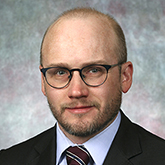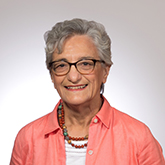HPP and MRP Students Travel to Philadelphia for Work Weekend
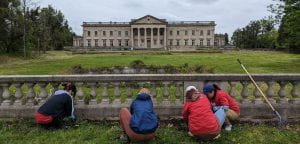
Every spring, Historic Preservation Planning (HPP) students and alumni sponsor a Work Weekend, taking steps to save existing historic properties. Work Weekend is a mutually beneficial opportunity for students, who gain hands-on experience into how their classwork translates into the real world, and historic properties and their caretakers, who receive much-appreciated help.
This year, 25 HPP and Master of Regional Planning (MRP) students traveled to Lynnewood Hall located in Elkins Park, Pennsylvania – about 10 miles north of Philadelphia – for the four-day Work Weekend with HPP Professor Michael Tomlan, HPP faculty member Nathaniel Guest (HPP ’12), and Professor Suzanna Barucco of Thomas Jefferson University (HPP ’88). Lynnewood Hall, a Neoclassical Revival mansion, is one of the last surviving private mansions of the Gilded Age in the greater Philadelphia area. The T-shaped behemoth of a building, which has been called “the last of the American Versailles,” has 110 impressive rooms and sits on a large densely forested lot.
Lynnewood Hall is now vacant and in a state of disrepair, however, is amid a massive adaptive reuse plan that explores its potential to accommodate education, recreation, and other possible uses. The local host, Lynnewood Hall Preservation Foundation, had recently entered into a purchase agreement to take over and restore the property which had been held by the First Korean Church of New York since the 1990s. One of the best opportunities of the trip for first year HPP student, Brytton Burnside, was “learning firsthand how [historic preservation] foundations go through the process of acquiring a historic property and then restoring it.”
Students participated in landscape restoration work, recovered historic architectural details (e.g., balusters, trim, door hardware) from thickets and rubble, and cleaned and organized rooms within the residence. Over the weekend, students worked diligently to remove mounds of overgrowth and considerable remnants of a sophisticated landscape, with terraces, railings, statuary, and fountains were revealed. All this hard work was done under the watchful eyes of Perry, a Canada Goose who was dutifully protecting his nest in a fountain on the property.
For second year MRP student, Laurel Margerum, the trip was an unbelievable experience to explore a house of this grandeur in its unrestored state. She was gracious to the local hosts Angie, Bill, and Tyler who allowed students the rare opportunity to explore almost every inch of the mansion. “It was rewarding to be involved in a small part of [Lynnewood Hall’s] transformation.”
On the way back to Cornell, students were treated with a visit to Colebrookdale Railroad, a Civil-war era rail line that had fallen into disrepair. Professor Guest led a restoration effort that not only restored the train and its tracks into a functioning state, but also served as an engine of community and economic development for the area.
Lynnewood Hall is being reborn through the efforts of the Lynnewood Hall Preservation Foundation supported by an initial gift from Scott and Susan Bentley, and we were proud to assist in the early efforts of what, no doubt, will be one of the great preservation projects of our generation.
Colloquium 4/28: Pamela Herhold: Transit and the Pandemic: Mapping a Way Through and Beyond COVID-19
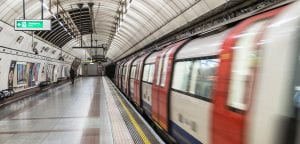
Abstract
Transit agencies worldwide have recently experienced declines in ridership and fare revenue, with agencies previously most dependent upon fare revenue suffering the most. These declines are partially a result of the COVID-19 pandemic and the rise in remote work. Yet, many communities still expect transit agencies to provide a basic level of service for transit-dependent travelers and give “choice riders” an alternative to driving. Transit agencies are also expected to plan for future travel — an uncertainty given changes in work and location patterns. As transit agencies balance these demands, they often rely on multiple revenue sources with restrictive uses — typically operations or capital, but not both — that can greatly hinder finding a good balance.
In this guest lecture, Pamela Herhold, Assistant General Manager of Performance and Budget for the Bay Area Rapid Transit District (BART)Opens an external link, will discuss how BART’s ridership and revenue patterns have evolved with the pandemic and how this has affected the way the agency approaches service and capital project planning.
Bio
Pamela Herhold is a lifelong transit rider and dedicated public servant, with nearly 30 years of experience in the public transit industry. At BART, she leads the Executive Office of Performance & Budget, a diverse team focused on the financial health and sustainability of the BART organization. Herhold is responsible for BART’s $2.5 billion annual budget, grant development, audit, fare policy, long-term financial planning, and navigating the financial impacts of a pandemic. She received both her master’s and undergraduate degrees from the University of Florida.
Colloquium 4/21: Michael Manville and Rosie Tighe: YIMBY-ism — Is Upzoning a Viable Solution to the Affordable Housing Crisis?

image / Ryan Lau on Unsplash
Abstract
In recent years, local governments across the United States have turned to lifting zoning restrictions as a mechanism to attenuate the affordable housing crisis prevalent in many urban areas. Proponents of this so-called “Yes In My Backyard” (YIMBY) movement suggest that the crisis is at least partly a supply problem caused by zoning restrictions and that, if these artificial barriers to housing production were removed, it follows that more housing production would occur and lead to some level of housing cost reduction. Opponents suggest that there are other factors overlooked by proponents that, if controlled for, limit or nullify the effectiveness of the policy intervention.
In this panel, scholars will review these diverging perspectives based on what research to date tells us about the effectiveness and impacts of YIMBY-ism.
Bios
Michael Manville
Associate Professor of Urban Planning at UCLA Luskin School of Public Affairs
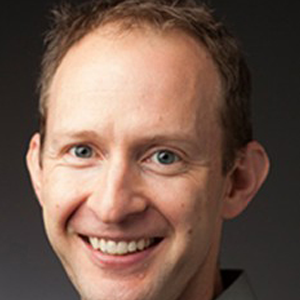
Rosie Tighe
Associate Professor of Urban Studies at Cleveland State University Levin College of Urban Affairs
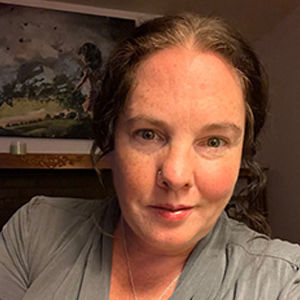
SPONSORED BY THE RUSSELL VAN NEST BLACK LECTURE FUND
Colloquium 4/13: Spatial Structure and Travel Patterns of the Post-Pandemic City
 image / Andre Benz, Unsplash
image / Andre Benz, Unsplash
Event Abstract
The data is in: The COVID-19 pandemic has triggered an increase in work-from-home and both commercial and residential relocation away from the city center, matched with a reduction in work-based travel. But is this change temporary or long-term? Did the internet just need the pandemic to bring about a demise of central cities? Or will travel behavior and location choices revert to how it was before the pandemic? What are the net impacts and how should planners respond?
During this symposium, scholars will present their research on employee and employer outlooks regarding the future of work-from-home, and on inter- and intra-metropolitan relocation patterns of firms and households. Keynote speaker Genevieve Giuliano will then position the pandemic in the evolutionary history of cities’ spatial structures and travel patterns. All scholars will then participate in a roundtable discussion about what we can infer from current and past research about the future of the transportation-land use relationship in the post-pandemic world, and how planners and policymakers should consider this.
Symposium organized by Strauch Fellow Zakhary Mallett.
Schedule
| 8:30 a.m. | Continental Breakfast Reception |
| 9:15 a.m. | Opening Comments |
| 9:30 a.m. | Session 1: The Present and Future of Work-from-Home |
| 10:15 a.m. | Intersession Break |
| 10:30 a.m. | Session 2: Pandemic-Induced Household and Commercial Relocation Patterns |
| 11:30 a.m. | Lunch |
| 12:20 p.m. | Keynote Talk and Roundtable Discussion |
| 2 p.m. | Event Close |
Session 1: The Present and Future of Work-from-Home
Abstract
The COVID-19 pandemic sparked vast adoption of remote work practices. Now, as the pandemic wanes, employees and employers are negotiating when and how often to return to the office. Whereas Goldman Sachs’ CEO has insisted employees return to the office full-timeOpens an external link, Disney adopted a four-day return policyOpens an external link, and Airbnb adopted a permanent remote work policyOpens an external link. Estimating where this negotiation will settle has emerged as an imperative factor in assessing future spatial structures and travel patterns in cities and planning transportation and land use for that.
In this session, Deborah Salon and Amanda Stathopoulos will present their recent research regarding worker and employer perceptions about remote work, respectively, including each group’s outlook on the extent to which remote work will stick once the pandemic is declared over.
Speakers
Amanda Blomberg Stathopoulos
Associate Professor, and William Patterson Junior professorship Chair, in the Department of Civil and Environmental Engineering at Northwestern University
 Amanda Blomberg Stathopoulos is an Associate Professor and the William Patterson Junior professorship Chair in the Department of Civil and Environmental Engineering at Northwestern University. After finishing her Ph.D. in Transport Economics at the University of Trieste in 2012, she worked as a post-doc in the Transport and Mobility Laboratory at EPFL. In 2014 she joined Northwestern. Her research centers on transportation systems decision-making, adoption of innovation, and impacts on society. Her scholarship integrates quantitative and qualitative multi-disciplinary insights and develops methods to study how society adopts/adapts to evolving mobility technologies. The goal is to contribute to more effective and equitable planning, design, and policy-setting for new mobility systems.
Amanda Blomberg Stathopoulos is an Associate Professor and the William Patterson Junior professorship Chair in the Department of Civil and Environmental Engineering at Northwestern University. After finishing her Ph.D. in Transport Economics at the University of Trieste in 2012, she worked as a post-doc in the Transport and Mobility Laboratory at EPFL. In 2014 she joined Northwestern. Her research centers on transportation systems decision-making, adoption of innovation, and impacts on society. Her scholarship integrates quantitative and qualitative multi-disciplinary insights and develops methods to study how society adopts/adapts to evolving mobility technologies. The goal is to contribute to more effective and equitable planning, design, and policy-setting for new mobility systems.
She is the vice chair of the National Academies Transportation Research Board (TRB) Standing Committee on Travel Demand Forecasting and a member of the Standing Committee on Statistical Methods. She is a Zephyr Foundation Board member. Her research has been supported by multiple funding agencies such as the U.S. NSF, the Department of Transportation, and the U.S. State Department. She received the NSF Career award in 2019. Stathopoulos was awarded the Best Research on Innovation paper by TRB’s Urban Freight Transportation Committee for the paper “Performance Analysis of Crowd-shipping in Urban and Suburban Areas” in 2018.
Deborah Salon
Associate Professor in the School of Geographical Sciences and Urban Planning at Arizona State University
Deborah Salon is an Associate Professor in the School of Geographical Sciences and Urban Planning at Arizona State University. Salon studies transportation in cities with the goal of better understanding how these systems work, and how policies and smart investments might improve them. She is especially interested in strategies that can improve or maintain quality of life while reducing car ownership and use in cities. The methods she uses range from qualitative, interview-based research to advanced econometric analysis. Salon holds a Ph.D. in Agricultural and Resource Economics from the University of California, Davis. Before joining the faculty at ASU, she completed a post-doctoral fellowship at Columbia University’s Earth Institute and subsequently held a research appointment at UC Davis’s Institute of Transportation Studies.
Session 2: Household and Commercial Relocation Patterns
Abstract
Much public discourse suggests that the pandemic has fueled an “urban exodus” — urban residents fleeing to suburban and rural communities to escape health risks and take advantage of remote work benefits. What’s more, they also gain access to larger homes and lower costs of living. If true, this can fundamentally change travel patterns in many regions, and so effect how transportation and land use is to be planned. But what does the data say? Are people really relocating from the city center? Are firms following them? If so, where are people and businesses flocking to?
In this session, Luis Lopez and Lyndsey Rolheiser will present their recent research measuring urban-suburban changes in the housing and commercial real estate markets, respectively, to draw inferences on intra-metropolitan relocating of individuals and firms. In addition, Stephan Whitaker will present his research on inter-metropolitan migration patterns using population migration data.
Speakers
Luis Lopez
Assistant Professor in the Stuart Handler Department of Real Estate in the College of Business Administration at the University of Illinois at Chicago
Lyndsey Rolheiser
Assistant Professor of Urban and Real Estate Economics at the University of Connecticut
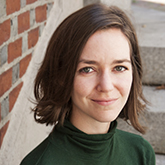 Lyndsey Rolheiser is an Assistant Professor of Urban and Real Estate Economics at the University of Connecticut and a research affiliate with MIT’s Center for Real Estate. Her research is concerned with how spatial relationships within communities inform the built environment and, conversely, how the built environment informs relationships among its inhabitants. Rolheiser’s diverse training in urban and real estate economics, planning, local public finance, and urban policy allows for the exploration of urban complexities using a variety of methodologies and tools — from planning and economic theory to econometric analysis, GIS, and qualitative methods. Rolheiser received a Ph.D. in Urban Economics from MIT, an M.A. in Economics from Simon Fraser University, and a BSc in Mathematics from the University of Alberta.
Lyndsey Rolheiser is an Assistant Professor of Urban and Real Estate Economics at the University of Connecticut and a research affiliate with MIT’s Center for Real Estate. Her research is concerned with how spatial relationships within communities inform the built environment and, conversely, how the built environment informs relationships among its inhabitants. Rolheiser’s diverse training in urban and real estate economics, planning, local public finance, and urban policy allows for the exploration of urban complexities using a variety of methodologies and tools — from planning and economic theory to econometric analysis, GIS, and qualitative methods. Rolheiser received a Ph.D. in Urban Economics from MIT, an M.A. in Economics from Simon Fraser University, and a BSc in Mathematics from the University of Alberta.
Stephan Whitaker
Policy Economist at the Federal Reserve Bank of Cleveland
Whitaker conducts research on migration between neighborhoods and labor markets and migration responses to shocks such as natural disasters. He has also published journal articles on housing markets, municipal finance, and educational attainment.
Whitaker earned his Ph.D. at the University of Chicago’s Harris School of Public Policy. Before entering his doctoral program, he served as a lieutenant in the U.S. Air Force and earned an M.S. in statistics from Colorado State University. Whitaker studied economics at Columbia University as an undergraduate.
Keynote Presentation
Abstract
The COVID-19 pandemic forced a shift to online work, school, shopping, and socializing, and some key benefits of cities disappeared. Lockdowns closed restaurants, theaters, shops, and more. Face-to-face encounters — the hallmark of cities — were suddenly a health threat. Not surprisingly, people began to move away as the amenities for which they paid rent premiums became unavailable. There has been much speculation on whether the changes in individual and firm behavior observed during the pandemic portend a new era for cities. I address the question by considering the effects of COVID-19 on agglomeration economies, a fundamental explanation for the existence of cities. I discuss the benefits and costs of agglomeration and explore how remote work, online shopping, and other major changes may affect agglomeration economies and, in turn, the structure of cities. I conclude that while the value of region-level clustering remains strong, impacts on city cores are more uncertain.
Speaker
Genevieve Giuliano
Distinguished Professor of Public Policy and Ferraro Chair in Effective Local Government in the Sol Price School of Public Policy, University of Southern California
Genevieve Giuliano is a USC Distinguished Professor of Public Policy and Ferraro Chair in Effective Local Government in the Sol Price School of Public Policy, University of Southern California. Her research spans relationships between land use and transportation, transportation policy analysis, travel behavior, information technology applications in transportation, and climate change. She has published more than 200 papers and has presented her research at venues around the world.
Giuliano is a past Chair of the Executive Committee of the Transportation Research Board, a National Associate of the National Academy of Sciences, and a RSAI Fellow in Regional Science. She is the recipient of several awards, most recently the Walter Isard award for distinguished scholarship contribution from the North American Regional Science Association, and designation as Distinguished Professor at USC. She has led the major professional organizations in her field and has served on several National Academy of Sciences policy studies, including the NAS Committee on Global Climate Change.
COSPONSORED BY THE ILR SCHOOL, PAUL RUBACHA DEPARTMENT OF REAL ESTATE, CORNELL REAL ESTATE COUNCIL, CORNELL PROGRAM IN INFRASTRUCTURE POLICY, AND CORNELL SYSTEMS ENGINEERING.
Students Travel to Shanghai for Urban Planning Field Workshop
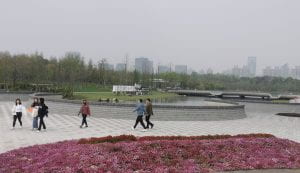
Five students in CRP 5076, Contemporary Urban Planning Issues in Shanghai, and CRP Associate Professor of the Practice George Frantz traveled to Shanghai over spring break. The week started off with a two-hour visit to the Shanghai Urban Planning Exhibition Center, which featured some 120,000 sq. ft. of exhibit space dedicated to highlighting the adopted Shanghai 2035 Master Plan and its recommendations. It was followed by five days of touring neighborhoods, parks, and commercial centers in Shanghai covered by the class lectures, as well as conversations with landscape architecture and planning faculty at Shanghai Jiao Tong University and Tongji University.
Students noted that the field trip provided a newfound appreciation for the complexities and challenges of urbanization in rapidly developing cities, like Shanghai.
One of the highlights for Hanqi Chai, a second-year MLA student, was visiting Wujiaochang, a vibrant commercial district in the Yangpu district of Shanghai. She was interested to see how the district evolved over time from a traditional residential area to a bustling commercial hub and found inspiration in what landscape architects can do for the community.
During the trip the team also spent a day conducting a site inventory of the semester project site for the class, Dongping Village on rural Chongming Island. The village is one of many across Shanghai and China that are the focus of a massive revitalization initiative to reverse population loss and economic decline.
This has caused a rapid pace of urban development which, Yixuan Sun, a first-year MLA student, observed the constant need to upgrade and modify urban planning standards and noted this was one of the biggest differences in planning practices in China and the United States. The field trip allowed her to “see the potential for cooperation between community and government planning departments [in China], where the model of self-management in communities has quietly begun to operate in various neighborhoods.”
The .75 sq. mi/1.9 sq. km site consists of the small village residential commercial area but is mostly abandoned agricultural fields, horticulture plantations, and an apparent former large dairy farm complex. An abandoned exhibition hall, greenhouse complex from the 2021 China National Flower Exhibition are located just outside the site, and several abandoned parking lots associated with the exhibition are located on the class site. Newer investments include a resort hotel apparently built for the flower exhibition but now hosting few visitors, and an empty corporate campus for a seed company that has been attracted to the village.
For first-year MRP student, Yawen Chen, visiting the Seeding Garden was her favorite part of the field trip. Yawen described that in the context of rapid development and urbanization, small-scale undeveloped lands in Chinese cities are common. She admired how the Seeding Garden utilized undeveloped land and transformed it into roadside green spaces for educational and agricultural use.
The assignment for the class is to create a new master plan for the site that would resuscitate the local economy through exploitation of the growing agri-tourism industry in Shanghai, as well as new agriculture-related industry and services. The Cornell students are working in parallel with students in an urban design studio at Shanghai Jiao Tong University School of Design being taught by Prof. Wenjun Ma. Several joint Zoom/Tencent facilitated classes have been held where students from the two side sides of the Pacific have presented their work and exchanged information on their shared site. The Cornell student team in Shanghai also attended and participated in the final reviews of their peers’ master plans at Shanghai Jiao Tong University.


